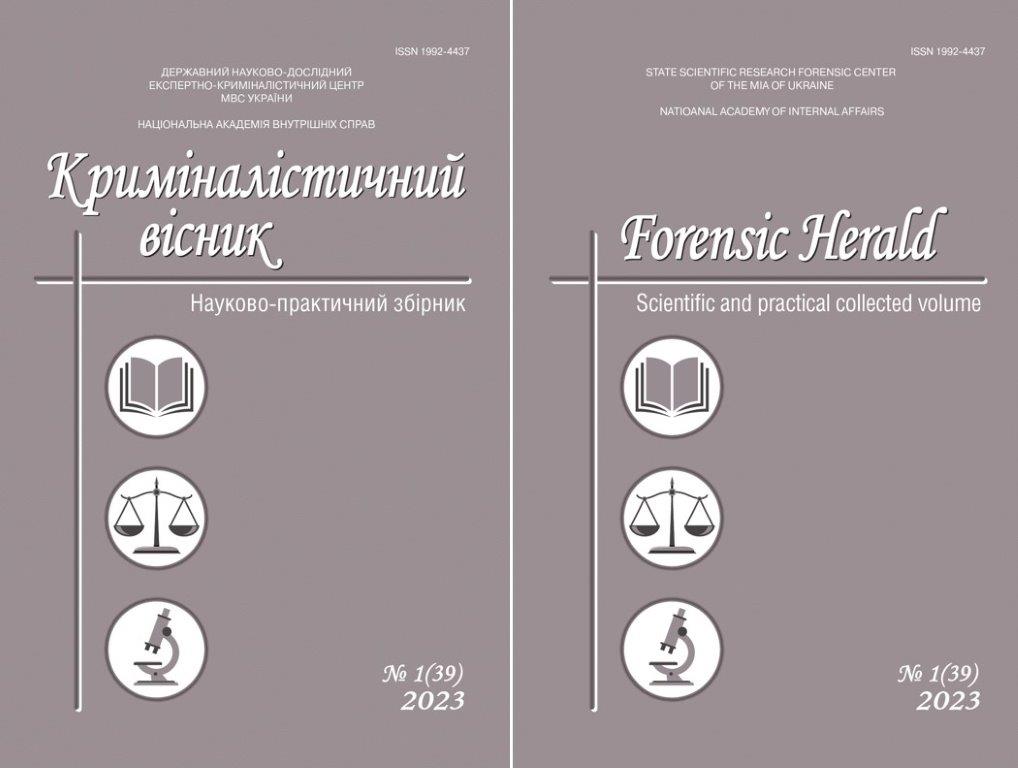COUNTERFEITING IN INDEPENDENT UKRAINE: HISTORICAL ASPECT
MESSAGE 1 1991–1994: EXISTENCE OF THE SOVIET RUBLE AND PUTTING CONSUMER CARDS INTO CIRCULATION; APPEARANCE OF THE FOREIGN CURRENCY AND ITS COUNTERFEITING; INTRODUCTION OF A REUSABLE COUPON
DOI:
https://doi.org/10.37025/1992-4437/2023-39-1-125Keywords:
counterfeiting, money counterfeiting, national currency counterfeiting, fake hryvnias, forgery Soviet rubles, US dollar counterfeiting, fake money saleAbstract
The purpose of the article is to characterize the main trends in money counterfeiting in the context of strengthening
the economic sovereignty of Ukraine and the introduction of the national monetary unit into circulation as well as to
determine some directions of counterfeiting in 1991–1994. Methodology. The work uses a number of methods: general
scientific (analytical, synthetic, logical, retrospective, mathematical and illustrative), historical (historical-comparative,
chronological, synchronistic, diachronic and typological) and source studies (critical, heuristic, metrological,
archeographic, iconographic and paleographic). Scientific novelty. The trends of money counterfeiting in the first years
after the declaration of independence of Ukraine (1991–1994), as well as some directions of countermeasures against
counterfeiting, are highlighted. Conclusions. In the first years of Ukraine's independence, the circulation of the Soviet
ruble was initially preserved in the monetary circulation, consumer cards were introduced to protect the consumer
market. Later the circulation of reusable coupons was started, and foreign currency became a new phenomenon in
society. In the first months of independence, before the introduction of Ukrainian money, counterfeit Soviet rubles
could enter monetary circulation. Motives for forgery of the consumer cards during their use were obvious, although
reliable such cases have not been identified yet. Despite a certain simplicity for its copying, the reason for the absence
of forgeries of these financial documents can be explained by their frequent change. In the conditions of instability on
the money market and hyperinflation, the demand for foreign currency grew. American 100-dollar notes, especially
banknotes of the 1988 model, became the most popular prototype for counterfeiters. Counterfeiters used various
methods and techniques to counterfeit US dollars. The second most popular currency was the German mark. Banks
also rewealed forged British pounds, Russian rubles, and Polish zlotys. From the other side French francs, Canadian
dollars, Hungarian forints, and Italian liras were less popular among counterfeiters. The reusable coupons were put
into circulation in 1992 and changed the structure of counterfeit money in Ukraine – almost all denominations of new
Ukrainian money became the prototypes for counterfeiting. Reference forensic literature makes it possible to study
the main varieties of counterfeit reusable coupons, distributed according to the territorial principle by the places of
detection. Newspapers often publish announcements of the coupons manufacturer company, as well as techniques
for detecting counterfeits. Currently, the problems of money counterfeiting are most thoroughly investigated by
specialists in two fields – forensics and historical disciplines, in particular numismatics and bonistics, the history of
money circulation. However, there is a lack of a systematic and thorough analysis of counterfeiting in independent
Ukraine, a reinterpretation of some phenomena in the context of the raised issues in a historical and forensic aspect



